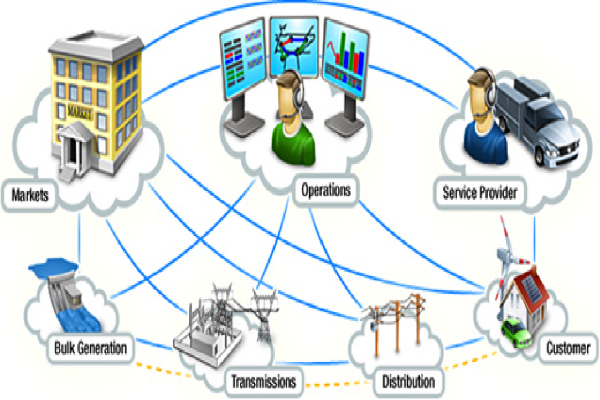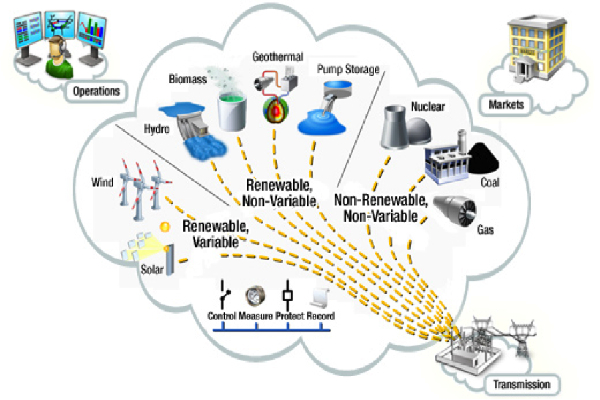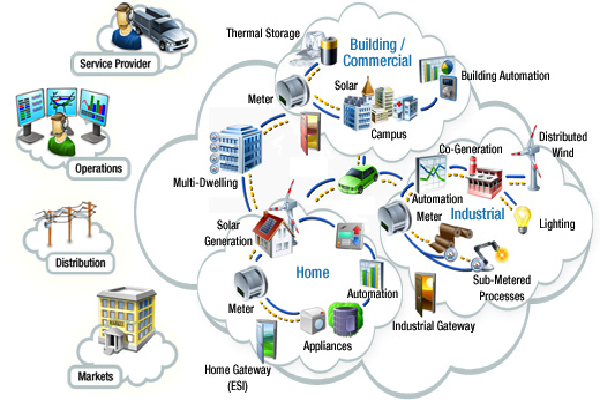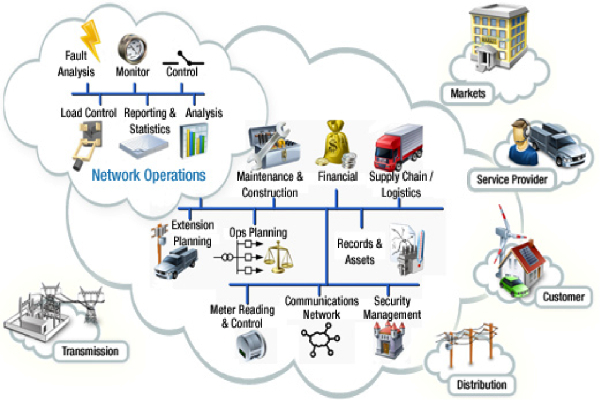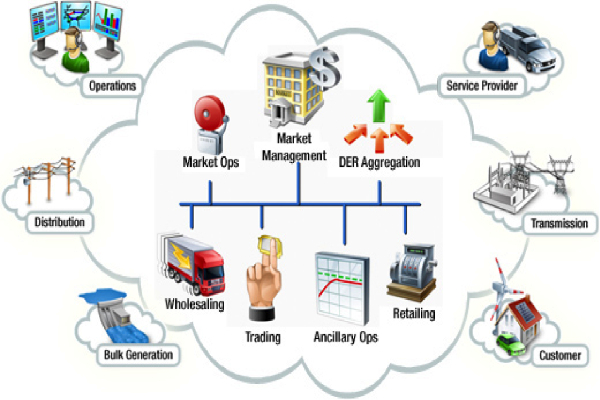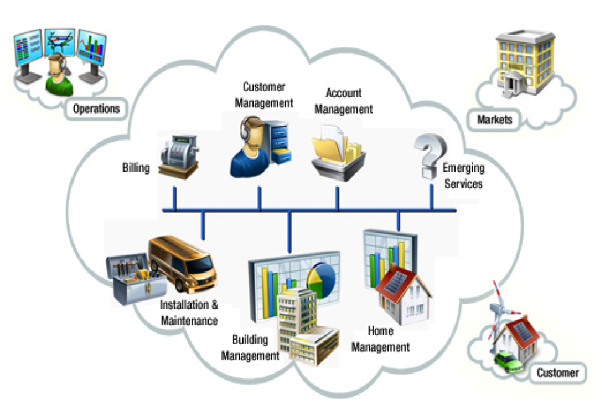
Smart Grid Technology
Smart Grid is about improved Generation and energy delivery based on just on time demand. It is about informed consumption via energy efficiency to reduced environmental impact and mitigate climate change. RCI is proud to be one the company that can offer a complete industrial standard scalable solution for smart grid implementation.
RCI’s solution is based on its competence in IT, Telecommunication, Control systems, Advanced Metering infrastructure (AMI), Data management systems for AMI i.e. Energy IP based systems for Energy information management and Renewable Energy generation with storage systems to create a micro-grid based on the concept of virtual power plant for virtual firm capacity. Our strategy is based on distributed generation and demand side management strategies for industrial, commercial and residential consumers.
RCI smart grid technology implementation is firmly based on IEEE Smart Grid Conceptual Model.
IEEE Smart Grid Conceptual Model
The National Institute of Standards and Technology (NIST) Smart Grid Conceptual Model provides a high-level framework for the smart grid that defines seven important domains: Bulk Generation, Transmission, Distribution, Customers, Operations, Markets and Service Providers. It shows all the communications and energy/electricity flows connecting each domain and how they are interrelated. Each individual domain is itself comprised of important smart grid elements that are connected to each other through two-way communications and energy/electricity paths. These connections are the basis of the future, intelligent and dynamic power electricity grid.
The NIST Smart Grid Conceptual Model helps stakeholders understand the building blocks of an end-to-end smart grid system, from Generation to (and from) Customers, and explores the interrelation between these smart grid segments. At IEEE, the smart grid is seen as a large “System of Systems,” where each NIST smart grid domain is expanded into three smart grid foundational layers: (i) the Power and Energy Layer, (ii) the Communication Layer and (iii) the IT/Computer Layer. Layers (ii) and (iii) are enabling infrastructure platforms of the Power and Energy Layer that makes the grid “smarter.”
Bulk Generation
The Bulk Generation domain of the smart grid generates electricity from renewable and non-renewable energy sources in bulk quantities. These sources can also be classified as renewable, variable sources, such as solar and wind; renewable, non-variable, such as hydro, biomass, geothermal and pump storage; or non-renewable, non-variable, such as nuclear, coal and gas. Energy that is stored for later distribution may also be included in this domain.
Distribution
The Distribution domain distributes the electricity to and from the end customers in the smart grid. The distribution network connects the smart meters and all intelligent field devices, managing and controlling them through a two-way wireless or wireline communications network. It may also connect to energy storage facilities and alternative distributed energy resources at the distribution level.
Customer
The Customer domain of the smart grid is where the end-users of electricity (home, commercial/building and industrial) are connected to the electric distribution network through the smart meters. The smart meters control and manage the flow of electricity to and from the customers and provide energy information about energy usage and patterns. Each customer has a discrete domain comprised of electricity premise and two-way communications networks. A customer domain may also generate, store and manage the use of energy, as well as the connectivity with plug-in vehicles.
Operations
The Operations domain manages and controls the electricity flow of all other domains in the smart grid. It uses a two-way communications network to connect to substations, customer premises networks and other intelligent field devices. It provides monitoring, reporting, controlling and supervision status and important process information and decisions. Business intelligence processes gather data from the customer and network, and provide intelligence to support the decision-making.
Markets
The Markets domain operates and coordinates all the participants in electricity markets within the smart grid. It provides the market management, wholesaling, retailing and trading of energy services. The Markets domain interfaces with all other domains and makes sure they are coordinated in a competitive market environment. It also handles energy information clearinghouse operations and information exchange with third-party service providers. For example, roaming billing information for inter-utility plug-in-vehicles falls under this domain.
Service Provider
The Service Provider domain of the smart grid handles all third-party operations among the domains. These might include web portals that provide energy efficiency management services to end-customers, data exchange between the customer and the utilities regarding energy management, and regarding the electricity supplied to homes and buildings. It may also manage other processes for the utilities, such as demand response programs, outage management and field services.
 roraimaconsulting.com
roraimaconsulting.com